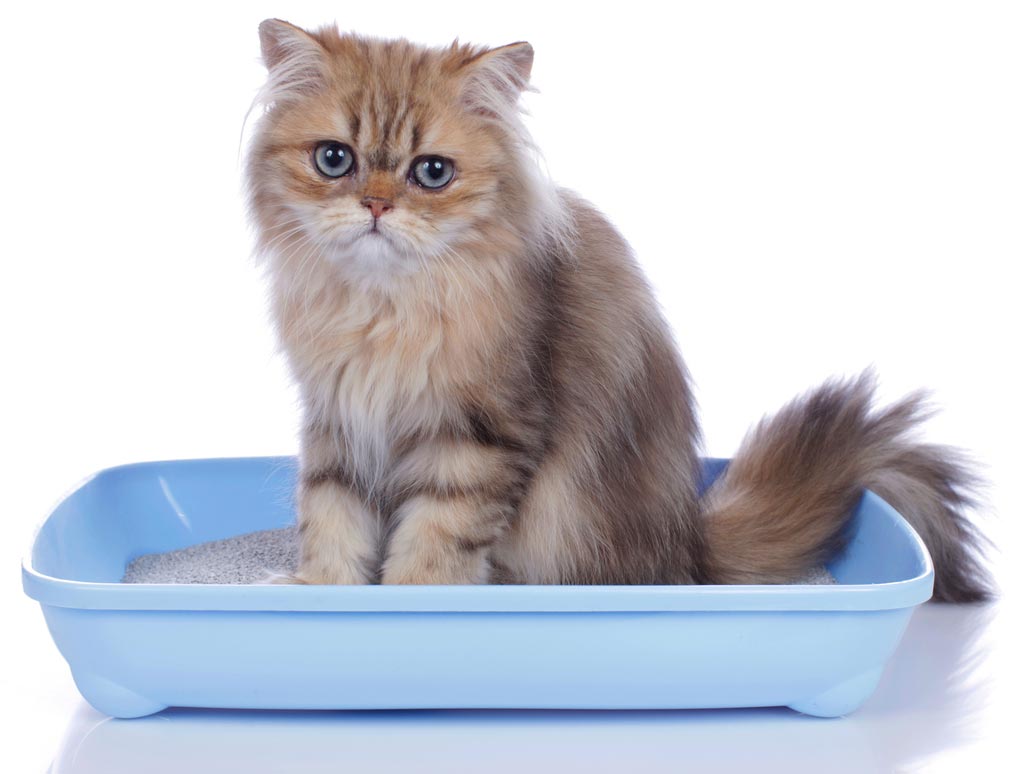The History of Cat Litter

Cats and humans have lived together for centuries. For the large majority of that time, cats wandered around on their own, hunting their food and eliminating where they wanted to. However, by the mid-1940s, more cats were living indoors. People provided them with boxes that usually contained paper, ashes, or dirt. However, none of those substrates did anything to decrease the odor associated with the box, ashes tracked around the house by the cat could be messy, and people began to look for a solution to those problems.
The Discovery of Absorbent Clay Cat Litter
Edward Lowe, whose family had a business selling ice, coal, sand, sawdust, and granulated, kiln-dried clay in Michigan, made the accidental discovery that the clay was as good for absorbing cat urine as it was for the grease spills they originally produced it for. One day in 1947, Lowe's neighbor asked him for some sand for her litter box because she was tired of using ashes. The sand was frozen, so he gave her a bag of granulated clay to try. She reported that the clay did a great job of keeping odors down, and she and her friends began asking for it routinely for their boxes. Mr. Lowe named the product Kitty Litter and eventually sold it to pet stores. He later developed the Tidy Cat brand of litter.
The Development of Clumping Clay Cat Litter
In 1984, another accidental discovery resulted in clumping clay cat litter. Thomas Nelson, a biochemist, was studying clay microscopically and made the discovery that some types, like bentonite, prevented urine from breaking down, which means the resulting ammonia smell is avoided. He also learned when bentonite was dried rather than put in a kiln, it clumped together when wet.
Biodegradable, Absorbent, Non-Clay Cat Litter
Today, more people are moving away from clumping clay litter because it can be dusty, it contains silica dust that might be harmful to the lungs of pets and people, often uses environmentally destructive strip mining to produce, and isn't biodegradable. Still, most cats like clumping clay litter, and more people are keeping cats indoors, so a good, absorbent, safe, biodegradable litter that cats like to use is still being sought.
Luckily, there are some choices available that fit the bill, and we think that World's Best Cat Litter is at the top of the pack. Made from cornmeal, it doesn't require mining and is biodegradable. It clumps nicely and doesn't leave an irritating dusty smell in the air after you pour it into the litter box. Many cats love it because it has the fine-grain sand feeling they naturally gravitate toward for eliminating in.
If you decide to try World's Best Cat Litter, make sure you leave a box with the old litter available to your cat until you're sure he's reliably using the new box. You can learn more here: "Tips for Avoiding Litter Aversion in Cats."
You May Also Like These Articles:
Tips for Avoiding Litter Aversion in Cats
What Is the Best Type of Cat Litter?
Helpful Tip: Put Two Litter Boxes Side by Side
Why Does My Cat Fling Litter out of the Box?
Five Reasons Cats Urinate Outside of the Litter Box
Best Litter for Kittens: Is Clumping Litter Safe?
Tips for Good Litter Box Placement
Notice: Ask-a-Vet is an affiliated service for those who wish to speak with a veterinary professional about their pet's specific condition. Initially, a bot will ask questions to determine the general nature of your concern. Then, you will be transferred to a human. There is a charge for the service if you choose to connect to a veterinarian. Ask-a-Vet is not manned by the staff or owners of CatHealth.com, and the advice given should not delay or replace a visit to your veterinarian.



